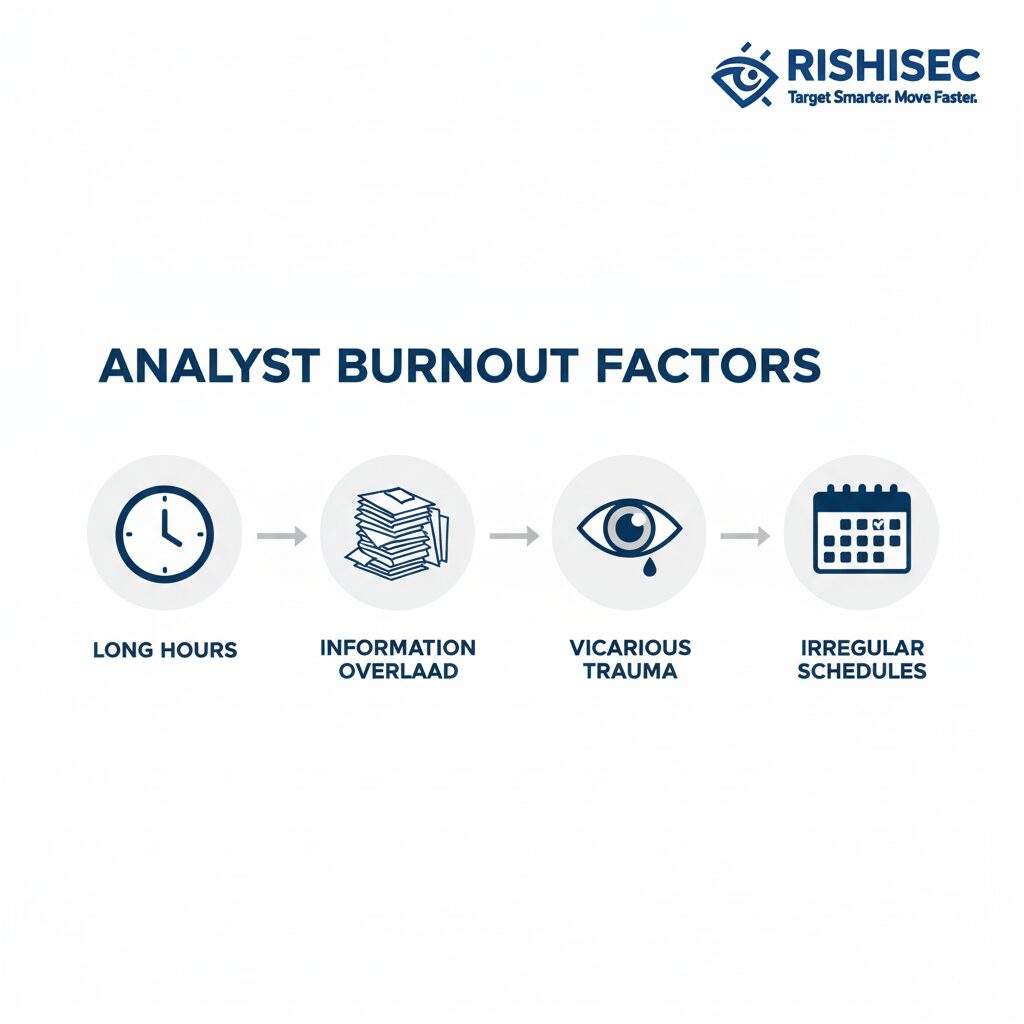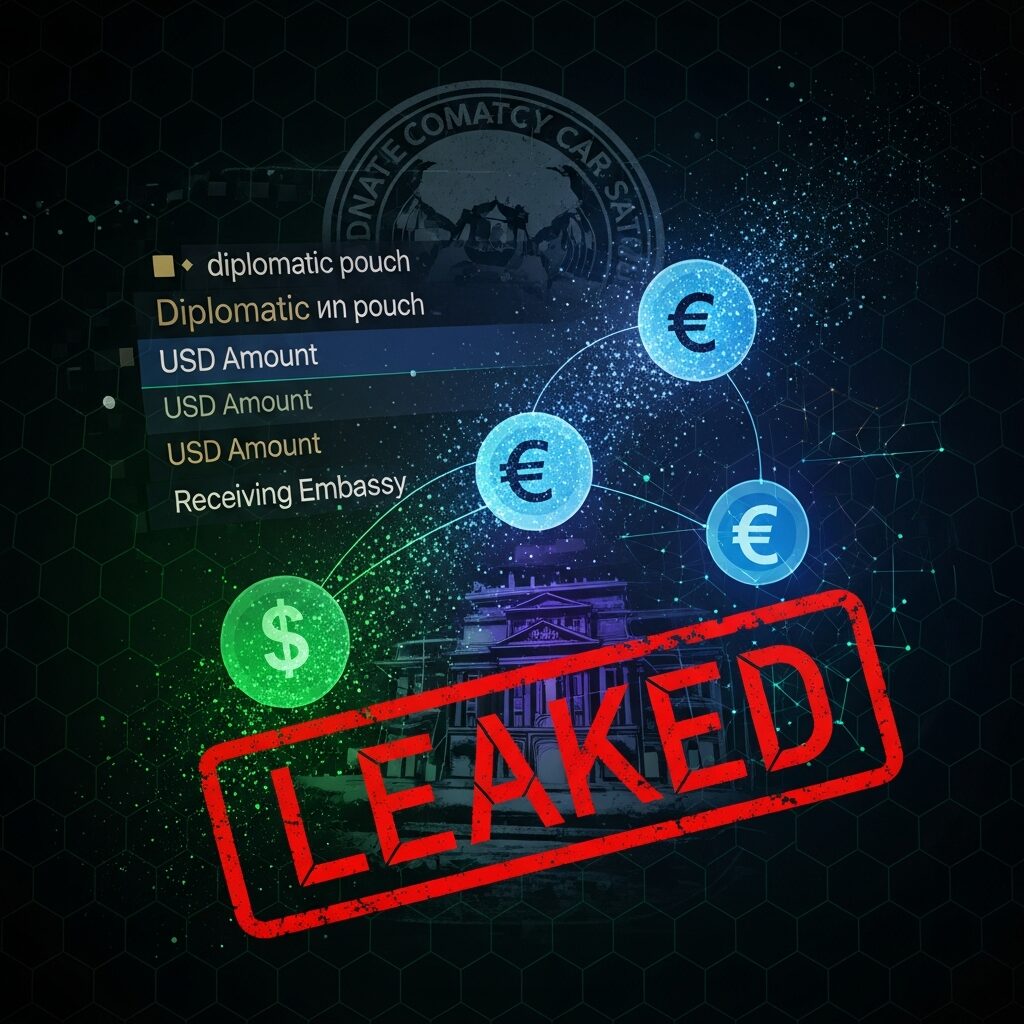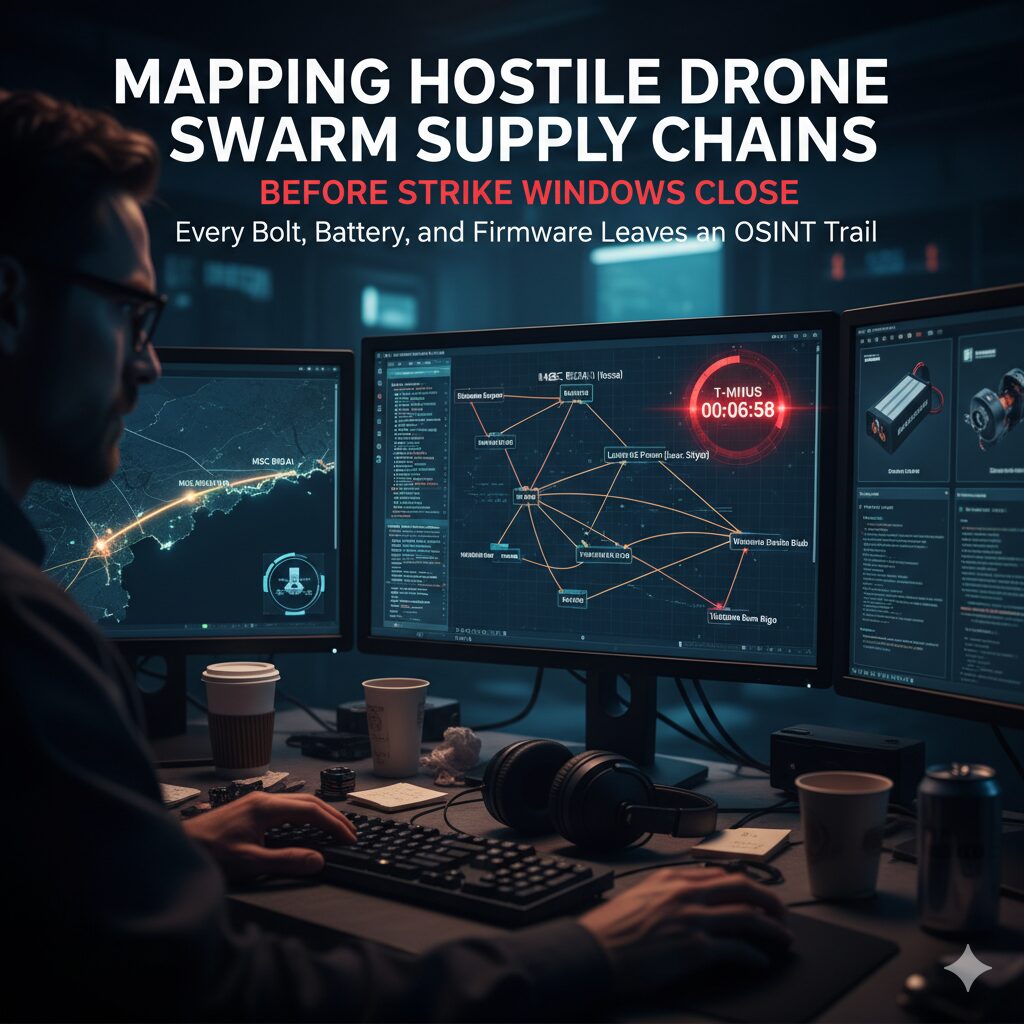At 3 AM on a Tuesday, a senior intelligence analyst submitted her resignation. She’d spent eight years building expertise in counterterrorism, earned commendations for critical threat assessments, and trained dozens of junior analysts. Her reason for leaving? “I can’t unsee what I’ve seen anymore.”
This isn’t an isolated incident. OSINT analyst burnout has become one of the most significant operational risks facing government intelligence agencies, yet it remains largely invisible in budget discussions, workforce planning, and leadership priorities. While organizations invest millions in technology platforms and data sources, the human cost of intelligence work continues to compound.
The nature of OSINT work has fundamentally changed. What once involved reading newspapers and monitoring broadcasts now requires analysts to process graphic violence, child exploitation materials, terrorist propaganda, and human trafficking evidence on a daily basis. The volume has exploded, the content has become more disturbing, and the operational tempo has accelerated. Yet analyst support systems haven’t evolved to match these new realities.
For cyber crime unit leads, special agents, and senior intel analysts responsible for team performance and mission success, understanding and addressing analyst burnout isn’t just a human resources concern. It’s a critical national security issue that affects intelligence quality, operational continuity, and organizational resilience.
Why OSINT Work Burns Out Even Your Best Analysts
Intelligence analysis has always been mentally demanding, but OSINT introduces unique psychological stressors that traditional intelligence disciplines don’t face. The combination of vicarious trauma, information overload, and operational pressure creates a perfect storm for analyst burnout.
Vicarious trauma accumulates through repeated exposure to disturbing content. Unlike first responders who witness single traumatic events, OSINT analysts may review hundreds of distressing images, videos, or documents in a single shift. Research on similar professions shows this repeated exposure produces cumulative psychological effects similar to direct trauma. Content moderators at social media companies, 911 operators, and investigative journalists all experience comparable challenges, but intelligence agencies often lack the robust mental health infrastructure these other fields have developed.

Information overload compounds the problem. Modern OSINT analysts monitor dozens of platforms simultaneously, process alerts in multiple languages, and synthesize intelligence from thousands of sources. The human brain wasn’t designed for this level of continuous processing. Cognitive fatigue sets in quickly, but operational demands rarely allow adequate recovery time. Analysts describe feeling like they’re drinking from a fire hose while trying to identify individual droplets.
Operational pressure intensifies these stressors. Intelligence agencies operate in high-stakes environments where delayed assessments can have serious consequences. Analysts work irregular hours, respond to crises during off-shifts, and face constant pressure to produce faster intelligence with fewer resources. The intelligence frameworks government agencies use often prioritize speed and accuracy but rarely account for analyst welfare.
The Operational Cost of Ignoring Analyst Burnout
Burned-out analysts don’t just feel bad; they perform worse. The operational consequences of analyst burnout directly impact mission success and organizational effectiveness. Understanding these costs helps frame burnout prevention not as a nice-to-have benefit but as an operational necessity.
Intelligence quality degrades as burnout progresses. Fatigued analysts make more verification errors, miss critical connections, and produce less thorough assessments. Research across multiple fields shows cognitive performance declines significantly under chronic stress. An analyst who normally catches 95% of relevant signals might drop to 75% when burned out, and that 20% gap could contain the critical intelligence that prevents an attack or solves a case.
| Burnout Stage | Performance Impact | Visible Indicators | Organizational Cost |
|---|---|---|---|
| Early Stage | 10-15% slower processing | Increased errors, missed deadlines | Reduced team output |
| Moderate Stage | 25-35% accuracy decline | Absenteeism, conflicts with colleagues | Intelligence gaps, team dysfunction |
| Advanced Stage | 40-60% productivity loss | Complete disengagement, resignation | Loss of expertise, recruitment costs |
| Crisis Stage | Analyst departure | Formal resignation or medical leave | $150K-$300K replacement cost |
Turnover accelerates institutional knowledge loss. When experienced analysts leave due to burnout, they take years of accumulated expertise with them. Training replacements costs significant time and money, but the bigger loss is the intangible knowledge: source relationships, pattern recognition abilities, and contextual understanding that only develops through experience. According to Bellingcat’s research on investigator wellness, organizations lose approximately three to five years of effective analytical capacity for every senior analyst who leaves due to burnout.

Team morale deteriorates when burnout spreads. One burned-out analyst affects team dynamics, but multiple burned-out team members create organizational dysfunction. Junior analysts look to senior colleagues for mentorship and modeling, so visible burnout signals that this is an unsustainable career path. Recruitment becomes harder when potential candidates see high turnover and stressed existing staff.
Security risks increase as analysts disengage. Burned-out employees are more likely to make operational security mistakes, violate protocols, or become insider threats. This isn’t malicious; it’s the predictable result of depleted cognitive resources and emotional detachment. When analysts stop caring about their work, they stop exercising the vigilance that keeps classified systems and sensitive sources secure.
Building Burnout-Resistant Intelligence Operations
Addressing analyst burnout requires systematic changes at the organizational, team, and individual levels. This isn’t about occasional wellness initiatives or token gestures; it’s about fundamentally redesigning how intelligence work gets done to be sustainable over career-length timelines.
Implement exposure rotation protocols. No analyst should review disturbing content continuously for months at a time. Establish formal rotation schedules that alternate high-trauma assignments with lower-intensity analytical work. Some forward-thinking agencies use a 60-40 split: 60% of time on standard OSINT work, 40% on less psychologically demanding tasks like training development, process improvement, or strategic planning. This rotation maintains skills while providing necessary psychological recovery periods.
Create mandatory decompression time after high-trauma exposures. If an analyst spends four hours reviewing graphic violence or exploitation materials, that analyst needs dedicated recovery time before returning to normal duties.
The goal isn’t to replace human judgment but to amplify it strategically. Let automated systems handle the repetitive scanning, filtering, and initial categorization. Reserve human analysts for the contextual interpretation, strategic assessment, and critical thinking that machines cannot replicate. This division of labor makes intelligence work more sustainable and more effective simultaneously.
Establish peer support networks that normalize discussing psychological challenges. Intelligence agencies have strong cultures around operational security, but this sometimes extends to unhealthy silence about psychological struggles. Create structured opportunities for analysts to discuss challenges with peers who understand the work. Some agencies have adopted models from human rights OSINT investigators, who’ve developed robust peer support systems for managing vicarious trauma.
- Build transparent workload metrics: Track not just output but also analyst exposure hours and intensity levels, making burnout risk visible to management before crises develop.
- Provide professional mental health resources: Contract with therapists who have security clearances and understand intelligence work, eliminating the barriers analysts face in seeking help.
- Recognize and reward sustainable performance: Promote analysts who maintain consistent quality over time rather than those who burn bright and burn out quickly.
- Train leaders to identify burnout indicators: Equip supervisors to recognize early warning signs and intervene before analysts reach crisis stages.

Making Analyst Wellness an Operational Priority
The intelligence agencies that thrive over the coming decade will be those that recognize analyst welfare as a strategic asset rather than a cost center. OSINT analyst burnout is not an inevitable consequence of the work; it’s a solvable operational challenge that requires intentional system design.
The analyst who resigned at 3 AM didn’t fail the mission. The system failed her by not building sustainability into the operational model. The next generation of intelligence leaders has the opportunity to redesign that model, creating organizations where talented analysts can build entire careers without sacrificing their psychological health.
That’s not just good for analysts. It’s good for mission success, organizational resilience, and national security outcomes. The agencies that figure this out first will gain a decisive advantage in the competition for top analytical talent.
Ready to reduce analyst burnout while improving intelligence outcomes? Discover how Kindi’s AI-powered automation helps intelligence teams work smarter without burning out. Or build more resilient analytical skills through our hands-on OSINT training courses.
FAQ
What is OSINT analyst burnout and why does it matter?
OSINT analyst burnout is the psychological and physical exhaustion resulting from prolonged exposure to disturbing content, information overload, and high-pressure intelligence work. It matters because burned-out analysts produce lower-quality intelligence, make more errors, and eventually leave their positions, creating costly turnover and institutional knowledge loss that directly impacts national security operations.
How does analyst burnout affect intelligence quality?
Burned-out analysts experience significant cognitive performance degradation, with research showing accuracy declines of 25-60% depending on burnout severity. They miss critical connections, make more verification errors, produce less thorough assessments, and process information more slowly. Even a 10-15% performance decline can mean the difference between detecting and missing critical intelligence indicators.
What are the early warning signs of analyst burnout?
Early indicators include increased processing time for routine tasks, more frequent errors, missed deadlines, withdrawal from team interactions, increased absenteeism, irritability with colleagues, and visible fatigue. Leaders should also watch for analysts who stop asking questions, show diminished curiosity, or express cynicism about the value of their work.
How can technology help prevent OSINT analyst burnout?
AI-powered platforms like Kindi reduce burnout by automating repetitive collection and filtering tasks, allowing analysts to focus cognitive energy on high-value interpretation rather than exhausting pattern recognition. Technology handles routine scanning and preliminary analysis, compresses verification timelines through automated link analysis, and reduces the sheer volume of material requiring direct human review.




